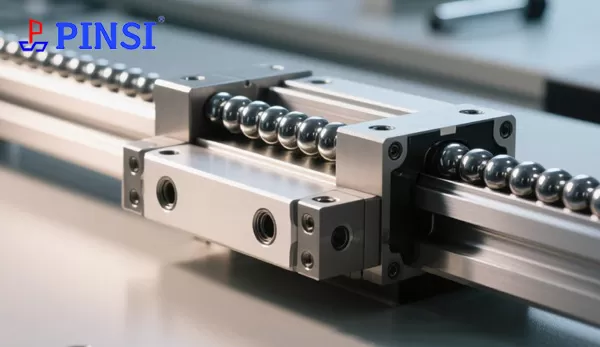If you're selecting, maintaining, or upgrading linear motion components, understanding high-precision linear guides is essential.

What Are High-Precision Linear Guides?
High-precision linear guides are advanced motion components designed to minimize friction, reduce backlash, and maintain tight tolerances (often within microns). They consist of:
Rail (Track): A hardened steel or aluminum guideway.
Carriage (Slider): Houses rolling elements (balls or rollers) for smooth motion.
Recirculating Elements: Reduce wear and distribute load evenly.
Unlike standard guides, high-precision versions use superior materials, tighter manufacturing tolerances, and advanced sealing to ensure long-term accuracy.
Key Features of High-Precision Linear Guide:
✔ Ultra-low friction for smooth motion
✔ High rigidity to prevent deflection under load
✔ Pre-ground surfaces for consistent flatness
✔ Preloaded rolling elements to eliminate play
High-Precision Linear Guides: Essential Technical Insights
1. Precision Classifications & Industry Standards
Global manufacturers like HIWIN and THK classify linear guides into three tiers:
● Standard Grade (N): ±10μm/m accuracy, suitable for logistics conveyors
● Precision Grade (P): ±2μm repeatability, widely used in CNC machining centers
● Ultra-Precision Grade (UP): ±0.1μm absolute accuracy, critical for semiconductor lithography equipment
2. Core Performance Parameters
Load Capacity: Dynamic load formula $$ L = \left( \frac{C}{P} \right)^3 \times 50km $$ determines operational life (C: rated load, P: equivalent load)
Rigidity Optimization: Medium preload achieves 400-500N/μm stiffness, while heavy preload exceeds 700N/μm for heavy-duty applications.
Speed Limits: Recirculation-ball designs support >200m/min with oil-air lubrication systems.
3. Industry-Specific Solutions
ApplicationCritical RequirementRecommended ModelCNC Machine Tools±3μm positioningABBA BRC20A0Medical CT Scanners≤45dB noise levelTHK SRG20Semiconductor0.1μm thermal stabilityIKO LWSR SeriesRobotics1.5m/s high-speed accuracy.
4. Installation & Maintenance
Mounting: Unidirectional alignment avoids assembly stress (tolerance +0.05~+0.1mm)
Lubrication: Oil-air systems reduce wear by 40% compared to grease
Failure Signs: Vibration >0.01mm/s or temperature rise >15℃ requires immediate inspection
Conclusion
High-precision linear guides are indispensable for applications demanding micron-level accuracy, high load capacity, and long-term reliability. By selecting the right guide, maintaining it properly, and sourcing from trusted manufacturers, you can enhance machine performance and reduce downtime.


 +8615622924499
+8615622924499
 +8615622924499
+8615622924499

